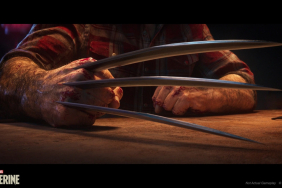The Assassin’s Creed franchise has long been navigating a delicate balance between its historical roots and contemporary gaming aspirations. After moving away from its traditional stealth sandbox to embrace the expansive role-playing game mechanics found in successful titles such as The Witcher 3, Ubisoft has opted for a ‘more is more’ strategy with its recent releases. While this approach has garnered significant success, nostalgic fans of the series still hold a deep appreciation for earlier entries that focused on the intricate struggle between good and evil.
This tension has led to varied interpretations of what Assassin’s Creed represents with each new installment. Ubisoft’s recent titles have attempted to cater to a broader audience. Games like Assassin’s Creed Odyssey and Valhalla showcased thrilling action sequences, blending history, mythology, and intrigue into massive open-world experiences. In contrast, Assassin’s Creed Mirage marked a return to the franchise’s roots, emphasizing stealth gameplay that reminded fans of its origins.
Assassin’s Creed Shadows represents an attempt to merge these contrasting approaches by amplifying brutal action while reintroducing stealth as a key gameplay element. Through its two main characters, Shadows strives to reconcile the classic Assassin’s Creed experience with its modern evolution, producing mixed outcomes. Stealth mechanics in Shadows feel more substantial compared to recent titles such as Origins, Odyssey, and Valhalla. Nonetheless, these mechanics are integrated into a world designed similarly to its predecessors.
Clair Obscur: Expedition 33, South of Midnight, Indiana Jones and More: The Biggest Games of April
The balance between stealth and explosive combat in Shadows sometimes appears jarring, resulting in a game that feels like an uneasy blend of two distinct styles. While each gameplay mode is enjoyable in its own right—stealth resonates with the series’ essence and combat is crafted to be one of the most robust in the RPG framework—the integration of these elements fails to distinguish Shadows from earlier RPG-centered Assassin’s Creed titles.
Shadows continues the series’ tradition as an expansive open-world RPG, with stealth rising to prominence once again. However, the fundamental structure of modern Assassin’s Creed remains unchanged. Players spend significant time traversing landscapes on horseback rather than scaling rooftops, while gameplay focuses more on camp clearance rather than intricately crafted assassination missions. This results in a reliance on repetitive activities and a narrative that lacks focus. Thus, despite enhancements and refinements in both stealth and combat, Shadows remains ensnared in the legacy of recent games.
![]()
Assassin’s Creed Shadows reincorporates stealth effectively
Photo Credit: Ubisoft/ Screenshot – Manas Mitul
The narrative in Shadows attempts to address some of the storytelling pitfalls seen in its predecessors, grounding itself in documented historical events reminiscent of earlier entries that focused on historical fiction prior to veering off into fantastical elements. Set in the much-requested backdrop of 16th century feudal Japan—a tumultuous period characterized by shifting political power, civil strife among rival lords, and external influences—the game begins in 1581, reflecting Oda Nobunaga’s fierce campaign to unify Japan.
The game’s first protagonist, Yasuke, enters Nobunaga’s circle in a prologue where he is introduced as Diogo, an African slave to Portuguese missionaries. Nobunaga is intrigued by his presence and sees potential in him, ultimately taking him into his service and granting him the title of samurai. This storyline will resonate with those familiar with James Clavell’s historical novel Shōgun or its television adaptations.
![]()
Yasuke is a unique addition to the Assassin’s Creed roster
Photo Credit: Ubisoft
As a loyal warrior to Nobunaga, Yasuke spearheads military campaigns against Iga Province and its notorious shinobi community. This backdrop sets the stage for a collision with the game’s second protagonist, Naoe, an Iga native from a long line of shinobi. Witnessing her homeland ravaged by Nobunaga’s forces, she encounters personal tragedy that propels her on a path of vengeance against the Shinbakufu, a shadowy group of masked samurai that threatens her existence and that of her family.
Shadows unfolds in three acts as players explore interconnected narratives, delving deeper into the identities of the Shinbakufu members, forming alliances, and uncovering long-hidden secrets. The game offers a tighter narrative structure than some of its predecessors, providing a focused experience that keeps players engaged, particularly in its initial act where Naoe’s quest for revenge takes precedence.
![]()
Naoe embodies the essence of the assassin in Assassin’s Creed Shadows
Photo Credit: Ubisoft/ Screenshot – Manas Mitul
However, the second act introduces a level of repetitiveness that detracts from the overall narrative drive, as players encounter a barrage of new characters while Yasuke and Naoe traverse from province to province looking for targets. This formulaic approach has plagued previous entries in the series, presenting a series of encounters that ultimately feel uninspired. As the protagonists pursue their targets, many side narratives emerge, leading to a landscape of mini-quests that often lack cohesion.
![]()
Yasuke’s presence is limited during the game’s initial act
Photo Credit: Ubisoft/ Screenshot – Manas Mitul
This repetition, although prevalent in many open-world games, has been particularly pronounced in recent entries of Assassin’s Creed. While Shadows is less cumbersome than Valhalla, its main story still struggles with repetition in the second act, leading to predictable encounters and diminishing the impact of the overarching plot.
Typically, Yasuke and Naoe uncover local conflicts, pursue leads, and face off against Shinbakufu members, culminating in confrontations that allow for either stealthy or aggressive approaches. Personal narratives, however, shine through in the form of compelling side stories. One, featuring Junjiro, a spirited child whose journey intersects with Naoe’s, evolves in meaningful ways, providing perspective in a violent backdrop. Similarly, Yasuke’s relationship with Lady Oichi, Nobunaga’s sister, adds depth to the narrative, though moments like these are overshadowed by the game’s more formulaic elements.
![]()
The supporting cast in Assassin’s Creed Shadows falls short
Photo Credit: Ubisoft/ Screenshot – Manas Mitul
As the climax of Shadows nears, both protagonists’ backgrounds unfold, offering insights into their motivations. The narrative builds towards events tying their fates together, but the payoff arrives late in the experience. A lengthy middle section lacks substantial impact, making the later revelations feel less significant when they finally arrive. Despite the intriguing character arcs, both Yasuke and Naoe exhibit limited emotional depth, often feeling underdeveloped as their stories unfold.
![]()
Yasuke’s backstory is intriguing but gradually revealed
Photo Credit: Ubisoft/ Screenshot – Manas Mitul
The game’s historical backdrop is perhaps its most captivating aspect. With a history rich in intrigue, feudal Japan has long been a highly desired setting among fans of Assassin’s Creed. However, recent titles set in this same environment, such as Sucker Punch’s Ghost of Tsushima and Team Ninja’s Rise of the Ronin, have somewhat diminished the novelty of Ubisoft’s exploration of this era.
While Shadows’ recreation of Japan offers stunning visuals—the lake’s landscapes, cities, and rural areas are meticulously rendered—the familiarity can detract from the wonder that typically characterizes Assassin’s Creed locations. Traversing the world has changed as well; players cannot simply climb any surface, requiring them to navigate carefully through the terrain, which can sometimes lead to more time spent on horseback rather than actively exploring the environment.
![]()
The scenic landscapes of Assassin’s Creed Shadows are breathtaking
Photo Credit: Ubisoft/ Screenshot – Manas Mitul
While the visuals offer breathtaking landscapes, the game also struggles with variety. Feudal Japan’s concentrated representation results in similar topographies, and players often perform similar tasks in various locales. Although the campaign is filled with historical landmarks, none match the iconic stature of past locations in the series, leaving players wanting more in terms of exploration and discovery.
![]()
Visually stunning but lacking unique spectacles
Photo Credit: Ubisoft/ Screenshot – Manas Mitul
Nonetheless, Shadows incorporates revamped weather systems and seasonal changes that enhance immersion, making the world feels alive with dynamic natural phenomena. Each season brings a new visual tone, enhancing engagement with the environment—shifting foliage, windswept landscapes, and snowfall provide a refreshing aesthetic element despite the overall sameness of some regions.
Overall, Assassin’s Creed Shadows stands out visually as one of the most impressive open-world games available today, with an array of detailed environments complemented by sophisticated weather effects. The game’s polish is apparent, with smoother animations and a bug-free experience, highlighting that the additional time invested by Ubisoft led to a well-crafted release.
![]()
Historical landmarks are intricately designed in Assassin’s Creed Shadows
Photo Credit: Ubisoft/ Screenshot – Manas Mitul
The dual protagonists contribute to gameplay variety, each offering distinct styles and approaches to exploration. Yasuke, not traditionally an assassin, brings a different dynamic with his heavy, deliberate maneuvers, focusing on brute force in combat. While proficient at close-quarters engagements, his substantial frame limits stealth options, leading players to utilize Naoe for infiltration. Naoe, characterized by her agility, can navigate environments with finesse, equipped to silently eliminate foes using stealth tools.
![]()
Yasuke’s combat style embodies brutal force
Photo Credit: Ubisoft
Yasuke’s combat style is characterized by heavy-hitting weapons, such as the katana and naginata, which allow for devastating attacks. Conversely, Naoe’s agility complements her stealth-oriented arsenal, including the kusarigama, offering versatility in combat. Each character’s unique mechanics add impressive depth to the overall experience.
In terms of combat mechanics, Shadows delivers a responsive and engaging system, elevating the action to new heights. However, both combat and story suffer from repetitiveness. The reliance on established formulas might render the experience less engaging over time when compared to games with innovative combat systems.
![]()
Naoe excels in quick and agile combat
Photo Credit: Ubisoft/ Screenshot – Manas Mitul
In summary, Assassin’s Creed Shadows embodies the series’ duality through its protagonists and gameplay styles. As the most polished entry in the franchise in years, shadows successfully combines rich visuals, smooth mechanics, and a return to prioritized stealth. However, the game’s inclination to rely on familiar gameplay structures and narratives detracts from its overall potential. While enjoyable and engaging, Shadows ultimately reflects the franchise’s hesitancy to forge bold new paths, clinging instead to established paradigms. Though it delivers a satisfying experience, it does not significantly evolve the Assassin’s Creed formula.






